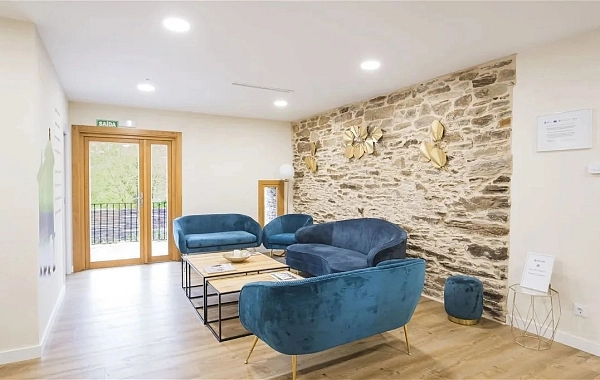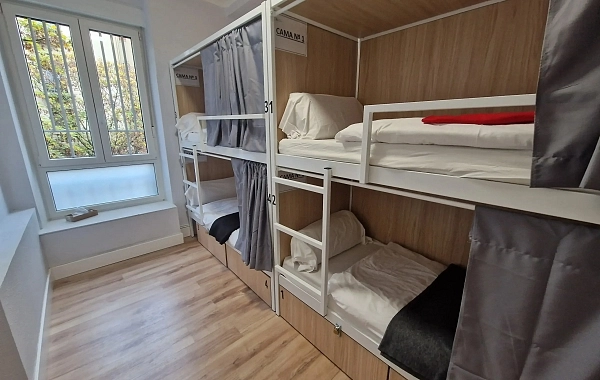Maps and Routes French Way
Distance750 Km.Stages35Related packages
The Camino de Santiago, also known as the Jacobean Route, is one of the most enriching experiences both culturally and spiritually. Recognised as a European Cultural Itinerary by the Council of Europe in 1987 and as a World Heritage Site by UNESCO, it is a symbol of Europe's shared history.
The French Way: The Most Popular Route
The French Way is the most well-known and travelled route. This itinerary, covering 750 kilometres, connects Roncesvalles (Navarre) with Santiago de Compostela (Galicia). Since the 12th century, this route has been the most prominent, even mentioned in the Calixtine Codex, the first medieval guide for pilgrims.
A Network of Paths: Options for All Pilgrims
Although the French Way is the most famous, the Jacobean Route has an extensive network of routes that cater to different interests and geographical locations. The main routes include:
- Levante Way: Crosses the country from the east, starting in Valencia.
- Cantabrian Way: A coastal journey with spectacular views.
- Asturian Way: With mountain landscapes and great natural richness.
- Silver Way: Ideal for those starting from the south of Spain.
- Portuguese Way: A perfect combination of Portuguese and Galician culture.
Each of these routes offers a unique experience, but all lead to the same destination: Santiago de Compostela.
Stages, Maps, and Historical Routes
The Camino is divided into stages to make the journey easier, mostly preserving the original medieval layout. These stages allow pilgrims to plan their day and enjoy the journey at their own pace. A good map is essential to guide the way and make the most of the experience.
Since its beginnings, the Camino not only had a spiritual impact but also an economic one. Throughout history, it promoted trade and the rise of Burgos thanks to the movement of pilgrims. However, between the 14th and 15th centuries, pilgrimages declined, though the route itself remained almost intact.
Modern-Day Recognition
Today, the Camino is experiencing a period of growth. It has received significant recognition, such as:
- Declared a European Cultural Itinerary in 1987 for its influence on European culture.
- Recognised as a World Heritage Site by UNESCO in 1993 (Spain) and 1998 (France).
- Winner of the Prince of Asturias Award for Concord in 2004, highlighting its value as a unifier between cultures.
Conclusion
The Camino de Santiago is more than just a pilgrimage: it is a transformative journey filled with history, culture, and spirituality. No matter which route is chosen — the French Way, the Levante Way, or any other — this experience connects pilgrims with centuries of tradition and leads them to an unforgettable destination.
Stages
- CF01 - Saint Jean de Pied de Port - Roncesvalles - 21 km
- CF02 - Roncesvalles - Zubiri - 22 km
- CF03 - Zubiri - Pamplona - 20 km
- CF04 - Pamplona - Puente la Reina - 19 km
- CF05 - Puente la Reina - Estella - 19,7 km
- CF06 - Estella - Los Arcos - 20,6 km
- CF07 - Los Arcos - Viana - 18 km
- CF08 - Viana - Navarrete - 22,3 km
- CF09 - Navarrete - Nájera - 16,9 km
- CF10 - Nájera - Santo Domingo de la Calzada - 21 km
- CF11 - Santo Domingo de la Calzada - Belorado - 22,7 km
- CF12 - Belorado - San Juan de Ortega - 24 km
- CF13 - San Juan de Ortega - Burgos - 27,6 km
- CF14 - Burgos - Hornillos del Camino - 18,3 km
- CF15 - Hornillos del Camino - Castrojeriz - 20,40 km
- CF16 - Castrojeriz - Frómista - 24,90 km
- CF17 - Frómista - Carrión de los Condes - 19,2 km
- CF18 - Carrión de los Condes - Lédigos - 23,40 km
- CF19 - Lédigos - Sahagún - 17,10 km
- CF20 - Sahagún - El Burgo Ranero - 17,9 km
- CF21 - El Burgo Ranero - Mansilla de las Mulas - 18,7 km
- CF22 - Mansilla de las Mulas - León - 18,4 km
- CF23 - León - Villadangos del Páramo - 21,8 km
- CF24 - Villadangos del Páramo - Astorga - 26 km
- CF25 - Astorga - Rabanal del Camino - 20,6 km
- CF26 - Rabanal del Camino - Molinaseca - 24,7 km
- CF27 - Molinaseca - Villafranca del Bierzo - 30,5 km
- CF28 - Villafranca del Bierzo - O Cebreiro - 30 km
- CF29 - O Cebreiro - Triacastela - 22,9 km
- CF30 - Triacastela - Sarria - 22 km
- CF31 - Sarria - Portomarín - 22 km
- CF32 - Portomarín - Palas del Rei - 23,9 km
- CF33 - Palas del Rei - Arzúa - 28,6 km
- CF34 - Arzúa - Santiago de Compostela - 38,4 km
- CF35 - O Pedrouzo - Santiago de Compostela - 20 km





